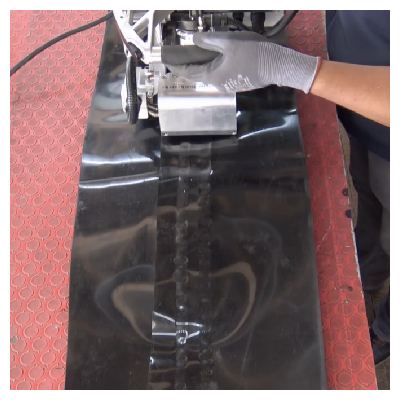Hot wedge equipment
Hot wedge equipment is ideal for sealing geomembranes of high- and low-density polyethylene, polypropylene and PVC.
Geomembrane welding is mainly used in construction of water pots, ponds, artificial lagoons, biodigesters, coatings, etc.
The economic sectors that require the most these types of geomembrane installations are:
- agricultural
- fish farming
- mining
- sanitation
- infrastructure
- etc.
The equipment is either analog or digital. They have preheating rollers, a hot wedge and pressure rollers, with which the equipment can travel on the geomembrane as well.


This hot wedge technology has a digital temperature regulator and a speed and pressure regulator. The size of the wedge also determines the width of the sealing, whilst the size of the equipment determines the width of the overlap.
In addition to that, the equipment can have a copper, steel, aluminium or bronze wedge. The wedges can be solid or include an air channel in the center in order to perform leaking tests.
In the same manner, the pressure and drive rollers can be with or without air channels, according to the type of wedge they are used with.The material of the rollers can be steel or rubber.
The copper wedge is used to a great extent in high-density polyethylene geomembranes. Aluminium, stainless steel and bronze wedges are used in low-density polyethylene and PVC; although the latter causes a high degree of corrosion on copper.
When welding geomembrane it's important to choose the right equipment according to the application. This is determined based on the type of material, thickness, surface and other variables to be taken into consideration, like the type of terrain, the gradient of the slopes, etc.
The different models of hot wedge equipment have varying features such as: weight, size, speed, width and length of wedges, analog or digital controls, etc.
The speed of an equipment depends on the thickness of the material, the size and material of the wedge, the heating capacity of the resistors and the precision of the rollers. Beyond choosing because of the speed of the equipment, the most important features to consider are the temperature stability of the wedge and the constant pressure of the rollers, as well as the motor’s torque. All of the above are decisive for a good weld.
Furthermore, one must bear in mind that to achieve good results, welding by hot wedge must be carried out by trained personnel with the adequate material, equipment and tools.
Contact
¿Are you interested in a hot wedge equipment?
Leave us your information and select the features you are interested in. We will be in touch shortly.






